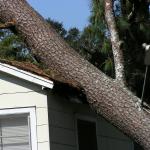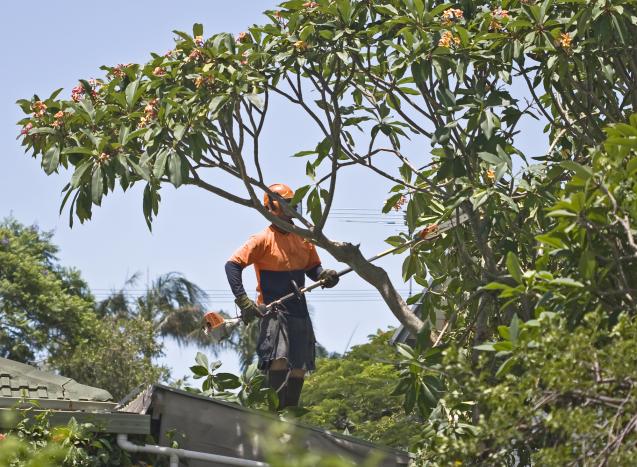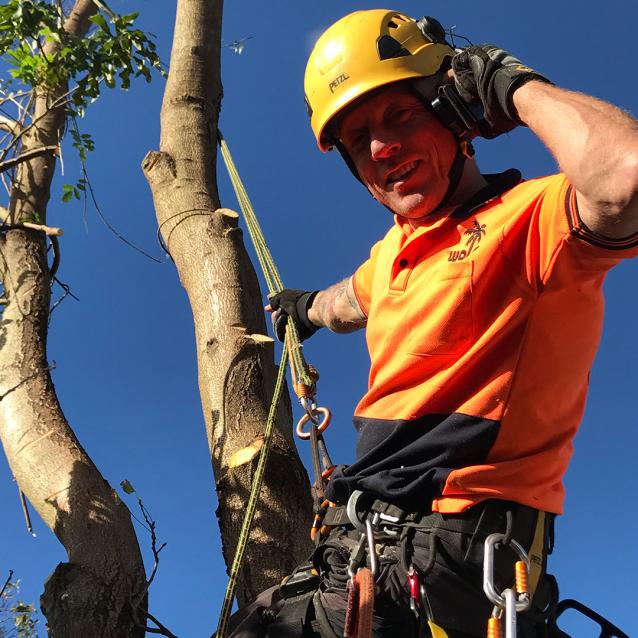
4 Signs That a Tree Needs to be Removed
By Wolf Trees and Gardens|May 27, 2019
Home and property owners need to regularly check their trees to determine if they need to be removed. Unhealthy, damaged, or ill-placed trees can blow over in bad weather. Their bulk and weight can smash homes and cars while potentially causing severe injuries, or even death.
Below are four important signs that a property owner should have a tree removed.
Large Cracks and Fissures in the Trunk
One of the most important and easy to spot signs of a tree in danger of falling is when it develops cracks and fissures. Trees in ill health have more difficulty resisting fungi and bacteria, which can cause the tree to develop large distortions.
Not all cracks, however, mean that the tree has developed serious problems. Trees often develop small cracks in the normal course of growth. While they should be watched carefully, they usually pose no threat.
Growing too Close to a Home or Other Structure
Trees and bushes growing too close to a building can spell trouble for a number of reasons.
Firstly, trees growing close to a structure represent a constant threat. Strong winds and bad weather can even knock down healthy trees, which can cause significant damage to buildings. Root growth can also seriously damage foundations.
Trees can provide access points into the home or building for termites, ants, and other creepy crawlies, especially if the foliage touches the structure. Pest control experts recommend that no bush or tree is planted too close to the home.
Branches Growing From the Base
Most people would not think twice if they saw new branches emerging from the base of a large tree. Experts, however, know that this serves as a symptom of a tree experiencing illness.
However, this symptom of illness does show that the tree still has vitality and can recover.
Poor Structure and Development
Sometimes a tree simply grows in the wrong place. Many trees evolved to grow tall and lean in a forest setting that prevents the foliage from spreading wide. If one of these species is planted in an open area it may develop both a lean trunk and a broad and heavy top. These trees remain inherently unstable and, if too close to a structure, should be removed regardless of their health.
Understanding and observing the warning signs of damaged or sick trees can help property owners protect their homes or other structures from costly harm and inconvenience.
Below are four important signs that a property owner should have a tree removed.
Large Cracks and Fissures in the Trunk
One of the most important and easy to spot signs of a tree in danger of falling is when it develops cracks and fissures. Trees in ill health have more difficulty resisting fungi and bacteria, which can cause the tree to develop large distortions.
Not all cracks, however, mean that the tree has developed serious problems. Trees often develop small cracks in the normal course of growth. While they should be watched carefully, they usually pose no threat.
Growing too Close to a Home or Other Structure
Trees and bushes growing too close to a building can spell trouble for a number of reasons.
Firstly, trees growing close to a structure represent a constant threat. Strong winds and bad weather can even knock down healthy trees, which can cause significant damage to buildings. Root growth can also seriously damage foundations.
Trees can provide access points into the home or building for termites, ants, and other creepy crawlies, especially if the foliage touches the structure. Pest control experts recommend that no bush or tree is planted too close to the home.
Branches Growing From the Base
Most people would not think twice if they saw new branches emerging from the base of a large tree. Experts, however, know that this serves as a symptom of a tree experiencing illness.
However, this symptom of illness does show that the tree still has vitality and can recover.
Poor Structure and Development
Sometimes a tree simply grows in the wrong place. Many trees evolved to grow tall and lean in a forest setting that prevents the foliage from spreading wide. If one of these species is planted in an open area it may develop both a lean trunk and a broad and heavy top. These trees remain inherently unstable and, if too close to a structure, should be removed regardless of their health.
Understanding and observing the warning signs of damaged or sick trees can help property owners protect their homes or other structures from costly harm and inconvenience.



